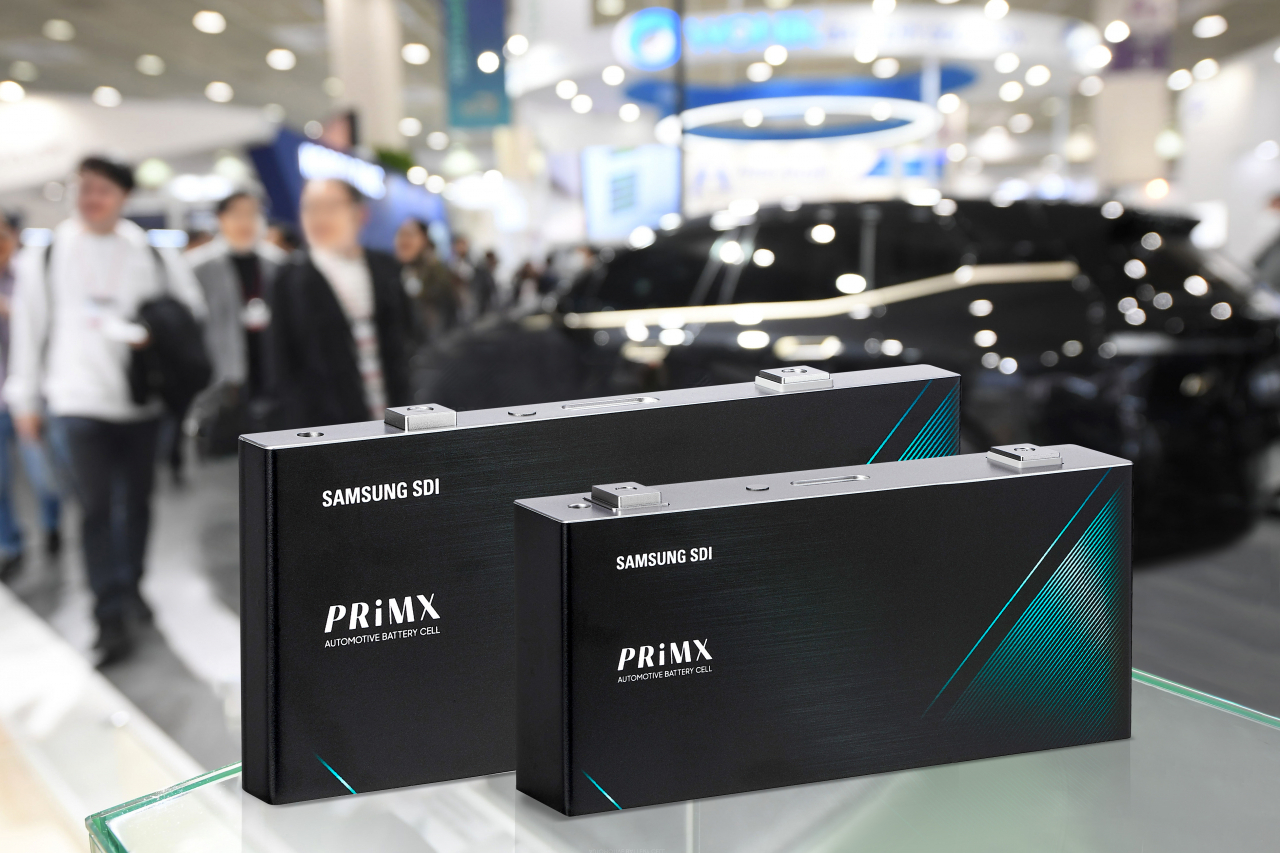 |
Samsung SDI’s high-end battery lineup, PRiMX (Samsung SDI) |
Samsung SDI has outpaced its Korean rivals by supplying batteries to the largest number of electric vehicles under the heightened US EV tax credit regulations that went into effect Jan. 1, according to industry sources on Sunday.
Of the 19 EVs eligible for the new incentive rules this year under the Inflation Reduction Act, 15 car models will use Korea-made batteries, while China’s CATL and AESC Group, which made the cut last year, have been removed from the list.
Samsung SDI topped the list with nine EVs running on its batteries -- five R1S and R1T models from Rivian, Ford’s Escape plug-in hybrid, Jeep’s Grand Cherokee plug-in hybrid and Lincoln’s Corsair Grand Touring hybrid. Last year, 10 cars using its batteries, including an Audi Q5 hybrid, had qualified for tax credits.
In the meantime, LG Solution reportedly saw the steepest drop in EVs using its batteries, from last year’s 16 models to only four this year -- Tesla’s Model 3, GM’s Chevrolet Bolt EV and EUV, and Chrysler’s Pacifica hybrid. The company declined to provide exact data, citing confidentiality.
SK On, the smallest among the Korean trio, has two car models using its batteries -- standard and extended range battery versions of Ford’s F-150 electric pickup -- which is eligible for tax benefits this year. In 2023, seven models qualified, including four Volkswagen cars and two Ford pickups.
Even though the list of EVs eligible for tax cuts will be updated throughout the year, industry watchers say that the January list reflects the readiness for the new rules among the Korean battery makers.
Last year, the US government required carmakers and their battery suppliers to source at least 40 percent of their minerals and 50 percent of their battery components from North American countries or those with free trade pacts with the US.
This year, the bar was raised even higher, mandating 50 percent for minerals and 60 percent for battery components, in order to receive the full $7,500 tax credit per car purchased. The rules also stipulate that no battery component should be produced or assembled by a “foreign entity of concern,” including China.
“We have heightened readiness to meet stricter guidelines this year,” said a Samsung SDI official, adding that the company is still working on reducing its reliance on China.
Meanwhile, LG Energy Solution seems to be struggling to ramp up production of its joint venture plants with GM in the US.
“Bolt cars, equipped with batteries produced at LG’s own Michigan plant, got the green light, while those powered by Ultium Cell (the LG-GM joint venture) batteries failed to meet the requirements -- meaning that their joint venture plants are still tackling sourcing issues,” said Park Cheol-wan, an engineering professor at Seojeong University.
But Park projected that more EVs running on LG batteries are likely to get tax incentives in the coming months, citing the suitable supply chain secured for the Bolt cars.
Although the more stringent IRA rules have thrown Chinese rivals out of the battery race in the US, Korean battery makers are still reluctant to say whether they have secured an upper hand amid heated competition.
“It may be a big opportunity in the US, but it comes with a price -- giving up cost-effective sourcing from China,” said an industry official on condition of anonymity. “Chinese companies can boost presence with their price advantage in global markets other than the US.”
Another source said, “In the long term, Washington’s decoupling push against China could be beneficial (for us). But it’s too soon to tell. For instance, the US government hasn’t clarified if it would prevent the Ford-CATL partnership from receiving the IRA tax credits.”
The US auto giant formed a licensing agreement with the Chinese battery maker to use its battery technology in an EV manufacturing plant that is under construction. It has been widely considered a move to bypass the IRA and claim tax incentives.
According to market tracker SNE Research, the Korean trio owned a combined 48.4 percent of the global battery market, excluding China, in the January-November period for 2023. LG Energy Solution and China’s CATL topped the list with the same 27.7 percent, followed by Japan’s Panasonic with 14.2 percent. SK On and Samsung SDI claimed 10.8 percent and 9.9 percent, respectively.







